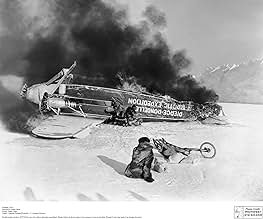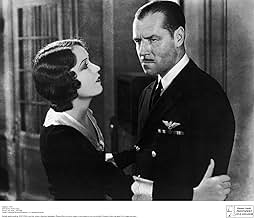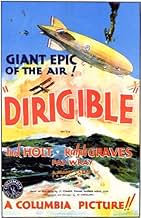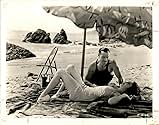अपनी भाषा में प्लॉट जोड़ेंJack Bradon is tasked to reach the South Pole with a dirigible.Jack Bradon is tasked to reach the South Pole with a dirigible.Jack Bradon is tasked to reach the South Pole with a dirigible.
- पुरस्कार
- कुल 2 जीत
Emmett Corrigan
- Rear Adm. John S. Martin
- (as Emmet Corrigan)
Richard Alexander
- Radio Operator
- (बिना क्रेडिट के)
Bess Flowers
- Party Guest
- (बिना क्रेडिट के)
George 'Gabby' Hayes
- Parade Official
- (बिना क्रेडिट के)
Edward Hearn
- Admiral's Aide
- (बिना क्रेडिट के)
Selmer Jackson
- Lt. Rowland
- (बिना क्रेडिट के)
Eddie Kane
- Lakehurst Radio Announcer
- (बिना क्रेडिट के)
Kenneth MacDonald
- Lt. Fogarty
- (बिना क्रेडिट के)
Adrian Morris
- Dirigible 'Los Angeles' Crewman
- (बिना क्रेडिट के)
William H. O'Brien
- Sailor
- (बिना क्रेडिट के)
Broderick O'Farrell
- Doctor
- (बिना क्रेडिट के)
फ़ीचर्ड समीक्षाएं
The "7" is strictly for the amazing aerial scenes involving airships or dirigibles (like the Hindenberg that crashed at Lakehurst, N.J.). In fact, all of the aviation moments are skillfully photographed for dramatic effect, especially the fierce electrical storm that destroys one of the dirigibles by pulling it apart in mid-flight.
The romance on the ground is far less convincing than the action sequences involving pilots flying to the South Pole. FAY WRAY is the femme lead, hopelessly in love with hubby RALPH GRAVES and begging his best friend JACK HOLT not to use him on his expedition to the South Pole. She's sick of staying behind and worrying about him and his grandstanding exploits. Unfortunately, none of the domestic scenes between Graves and Wray bear any semblance to reality--her weeping gets pretty tiresome before the plot is resolved.
But FAY WRAY was unquestionably a beautiful woman and director Frank Capra gives her plenty of close-ups. Her role is not particularly well written and she has trouble being anything more than a decorative ploy. RALPH GRAVES is not totally convincing as a reckless pilot. There's an awkwardness about his acting that is somewhat disconcerting here. JACK HOLT handles his role with authority and good screen presence.
A fascinating look at early aviation exploits using dirigibles and balloons when they were seriously considered to be the modern methods of aviation. Well worth watching.
The romance on the ground is far less convincing than the action sequences involving pilots flying to the South Pole. FAY WRAY is the femme lead, hopelessly in love with hubby RALPH GRAVES and begging his best friend JACK HOLT not to use him on his expedition to the South Pole. She's sick of staying behind and worrying about him and his grandstanding exploits. Unfortunately, none of the domestic scenes between Graves and Wray bear any semblance to reality--her weeping gets pretty tiresome before the plot is resolved.
But FAY WRAY was unquestionably a beautiful woman and director Frank Capra gives her plenty of close-ups. Her role is not particularly well written and she has trouble being anything more than a decorative ploy. RALPH GRAVES is not totally convincing as a reckless pilot. There's an awkwardness about his acting that is somewhat disconcerting here. JACK HOLT handles his role with authority and good screen presence.
A fascinating look at early aviation exploits using dirigibles and balloons when they were seriously considered to be the modern methods of aviation. Well worth watching.
Aside from featuring Fay Wray BEFORE she became famous in King Kong, the movie has value as historical record, because of the scenes of the U.S. Navy's dirigible, LOS ANGELES. The LOS ANGELES served a dual role in the film, first as the fictional PENSACOLA, destroyed in a storm at sea, and then as her real self. The loss of the PENSACOLA is prescient in a way, because her successors, the very real AKRON and MACON, which had yet to enter service when the movie was made, were subsequently both lost at sea in storms, bringing an end to rigid airships in the U.S. Navy. A predecessor, the SHENANDOAH was lost in 1928 in a storm over Ohio.
When this movie was made, only the LOS ANGELES was in service. The movie shows excellent closeup film of the ship mooring at Lakehurst N.J. as well as her experimental trapeze which allowed an aircraft to moor to the ship while in flight. This feature was incorporated in AKRON and MACON, along with a hanger to stow the planes aboard. These two, the biggest in USN service at 800 feet could each carry 3-4 planes. The planes could be "captured" on the trapeze, brought inside and then launched from their trapeze. An amazing sight to see!
When this movie was made, only the LOS ANGELES was in service. The movie shows excellent closeup film of the ship mooring at Lakehurst N.J. as well as her experimental trapeze which allowed an aircraft to moor to the ship while in flight. This feature was incorporated in AKRON and MACON, along with a hanger to stow the planes aboard. These two, the biggest in USN service at 800 feet could each carry 3-4 planes. The planes could be "captured" on the trapeze, brought inside and then launched from their trapeze. An amazing sight to see!
As we watch the Twentieth Century disappear in our wake, we're going to find films like this more and more precious. I mean, can you imagine? -- Here's a film that takes the airship absolutely seriously as an equal partner with the airplane. Here's a film that shows you basically how an airship was constructed and what it looked like inside, and all that as part of the plot! And if you're going to interrupt the main plot with a soap opera, who better to put in front of your eyes than the beautiful Fay Wray? And what a great way to get out of the romantic sub-plot's basic dilemma -- nice, clean, and fast. All things considered, a more than satisfying way to spend an evening.
Okay, I know, they are not blimps. They are Zeppelins. "Airships" was the preferred term by the U.S. Navy.
This is a very exciting action film for 1931. Apparently made with quite a high budget. I saw model shots, large sound stages filling in for Antartica, thousands of extras, real airships, and a gigantic ticker tape parade shot on location in New York City. All of these things cost much money. The U.S. Navy's use of airships was so brief that this film also marks one of the few stories about this chapter in our military history.
This film proves that Capra was also adept at high intensity action directing (for 1931) as well his usual character-driven morality plays that he became so well-known for.
The one thing that is the most striking to me about (some) early talking pictures, of which this is one, is that they have hardly any music score. This is true here, and only adds to the isolated feeling in the scenes of the doomed expedition struggling to escape from the frozen tundra. Plenty of sound effects in the scenes of the doomed Pensacola going down, but no music. In fact, the film even uses a few silent film style narration cards.
Anyway, in spite of this film dating from 1931, it has aged really well and doesn't seem too dated at all. A nice action/adventure film. The print they showed on TCM on television was in very good shape, even the sound was strong in most places. Yes, the love story seemed tacked on, but there are thousands of films in the history of Hollywood that could have survived artistically with their romantic subplots (probably inserted at the insistence of cigar-chewing studio bosses to get "the female market") jettisoned. In any case, this movie is quite entertaining and Worth checking out.
This is a very exciting action film for 1931. Apparently made with quite a high budget. I saw model shots, large sound stages filling in for Antartica, thousands of extras, real airships, and a gigantic ticker tape parade shot on location in New York City. All of these things cost much money. The U.S. Navy's use of airships was so brief that this film also marks one of the few stories about this chapter in our military history.
This film proves that Capra was also adept at high intensity action directing (for 1931) as well his usual character-driven morality plays that he became so well-known for.
The one thing that is the most striking to me about (some) early talking pictures, of which this is one, is that they have hardly any music score. This is true here, and only adds to the isolated feeling in the scenes of the doomed expedition struggling to escape from the frozen tundra. Plenty of sound effects in the scenes of the doomed Pensacola going down, but no music. In fact, the film even uses a few silent film style narration cards.
Anyway, in spite of this film dating from 1931, it has aged really well and doesn't seem too dated at all. A nice action/adventure film. The print they showed on TCM on television was in very good shape, even the sound was strong in most places. Yes, the love story seemed tacked on, but there are thousands of films in the history of Hollywood that could have survived artistically with their romantic subplots (probably inserted at the insistence of cigar-chewing studio bosses to get "the female market") jettisoned. In any case, this movie is quite entertaining and Worth checking out.
While "Dirigible" (1931) is notable as Frank Capra's best early film, the real credit for making something that was both a huge hit during the early years of talking pictures and an old film that will interest even today's jaded action movie fans should go to Editor Maurice Wright. Wright had to assemble this early blockbuster from what Capra shot and what the U.S. Navy provided in the form of stock and promotional footage. He did a great job and you rarely are aware that you watching a movie, let alone a fictional drama.
The story is a historical concoction, mixing elements of Robert Falcon Scott's sledding disaster at the South Pole and Nobile's ill-fated North Pole expedition in the airship "Italia". It is likely the producers of "The Red Tent" (1970) borrowed heavily from Capra's technique when they dramatized the crash of Nobile's dirigible for their film.
The destruction of the fictional dirigible "The Los Angeles" is the most interesting sequence in the film but the Navy's promotional footage is also quite interesting, particularly to viewers 75+ years later. There is extensive coverage of operations on the first USS Lexington; which would be sunk during WWII (The Battle of the Coral Sea). The rest of the simulated action stuff leaves something to be desired but was no doubt quite credible to viewers at the time of the film's release.
I wouldn't pay much attention to complaints that the back-story is lame and boring. It features a pre-Kong Fay Wray. She is younger and has her natural darker hair color. As such, I think you will find her about as beautiful as any actress in film history, especially in profile. Apparently Capra quickly figured out what he had with Wray as he makes extensive use of close-ups during her scenes; a technique that would not really come into fashion until the 1970's. And Wray exhibits considerable acting talent in these scenes, earnestly sincere as the wife of a glory-seeking Navy pilot. And since you can't take your eyes off her, any complaints about scripting and content are pretty much irrelevant.
Then again, what do I know? I'm only a child.
The story is a historical concoction, mixing elements of Robert Falcon Scott's sledding disaster at the South Pole and Nobile's ill-fated North Pole expedition in the airship "Italia". It is likely the producers of "The Red Tent" (1970) borrowed heavily from Capra's technique when they dramatized the crash of Nobile's dirigible for their film.
The destruction of the fictional dirigible "The Los Angeles" is the most interesting sequence in the film but the Navy's promotional footage is also quite interesting, particularly to viewers 75+ years later. There is extensive coverage of operations on the first USS Lexington; which would be sunk during WWII (The Battle of the Coral Sea). The rest of the simulated action stuff leaves something to be desired but was no doubt quite credible to viewers at the time of the film's release.
I wouldn't pay much attention to complaints that the back-story is lame and boring. It features a pre-Kong Fay Wray. She is younger and has her natural darker hair color. As such, I think you will find her about as beautiful as any actress in film history, especially in profile. Apparently Capra quickly figured out what he had with Wray as he makes extensive use of close-ups during her scenes; a technique that would not really come into fashion until the 1970's. And Wray exhibits considerable acting talent in these scenes, earnestly sincere as the wife of a glory-seeking Navy pilot. And since you can't take your eyes off her, any complaints about scripting and content are pretty much irrelevant.
Then again, what do I know? I'm only a child.
क्या आपको पता है
- ट्रिवियाThe production was shot during a California heat wave. To form vapor on the breath and give the impression that the pilots were in the Antarctic, the performers were given lumps of 'dry ice' (frozen carbon dioxide) in metal boxes to put in their mouths. Hobart Bosworth found the box cumbersome and simply put the ice in his mouth. He lost his tongue and most of his lower jaw.
- गूफ़The name of this Dirigible was the USS Pensacola but there was already a USN heavy cruiser of the same name that was in service since 1928 when this movie was made. The Navy does not assign duplicate names to ships/air ships in service at the same time.
- कनेक्शनFeatured in Frank Capra's American Dream (1997)
- साउंडट्रैकAnchors Aweigh
(1906) (uncredited)
Music by Charles A. Zimmerman
Lyrics by Alfred Hart Miles and R. Lovell
Played during the opening credits and often in the score
Sung by guests at a party
टॉप पसंद
रेटिंग देने के लिए साइन-इन करें और वैयक्तिकृत सुझावों के लिए वॉचलिस्ट करें
विवरण
बॉक्स ऑफ़िस
- बजट
- $10,00,000(अनुमानित)
- चलने की अवधि1 घंटा 40 मिनट
- रंग
इस पेज में योगदान दें
किसी बदलाव का सुझाव दें या अनुपलब्ध कॉन्टेंट जोड़ें





































